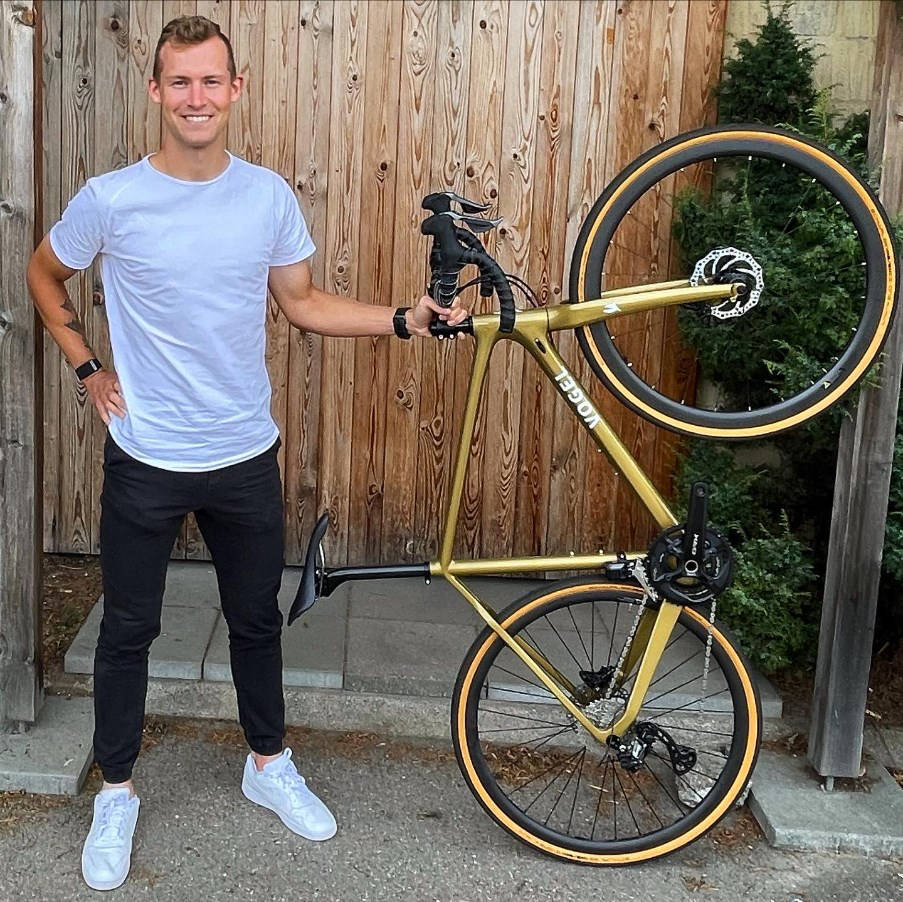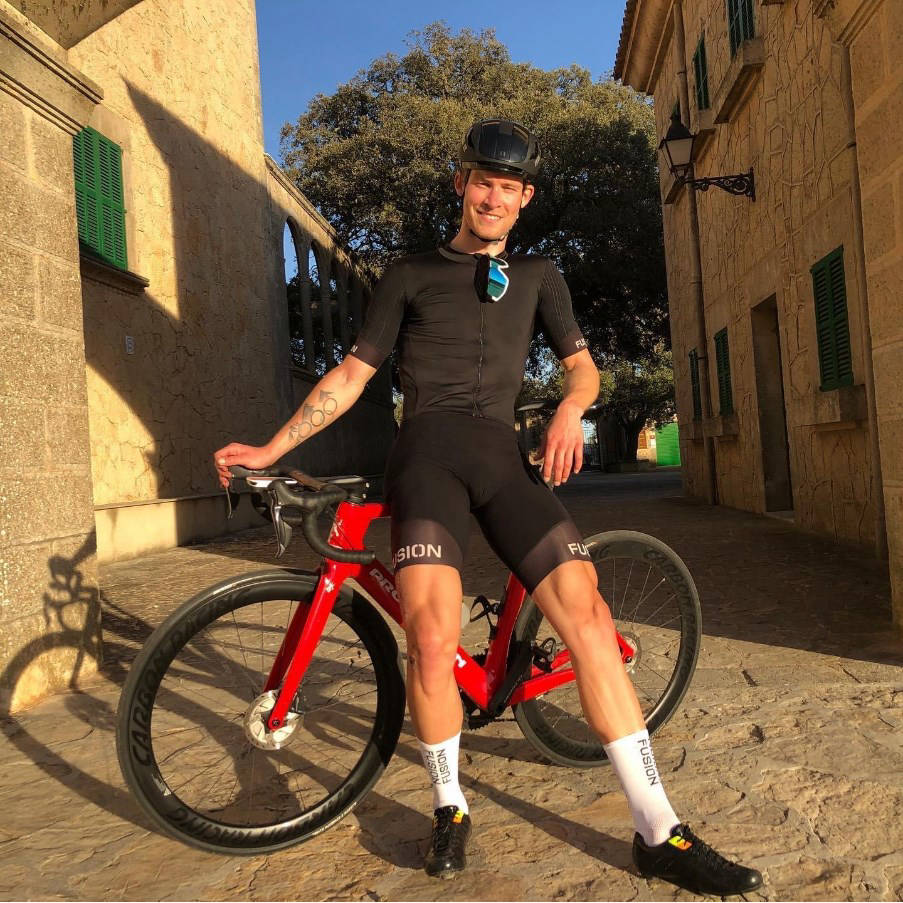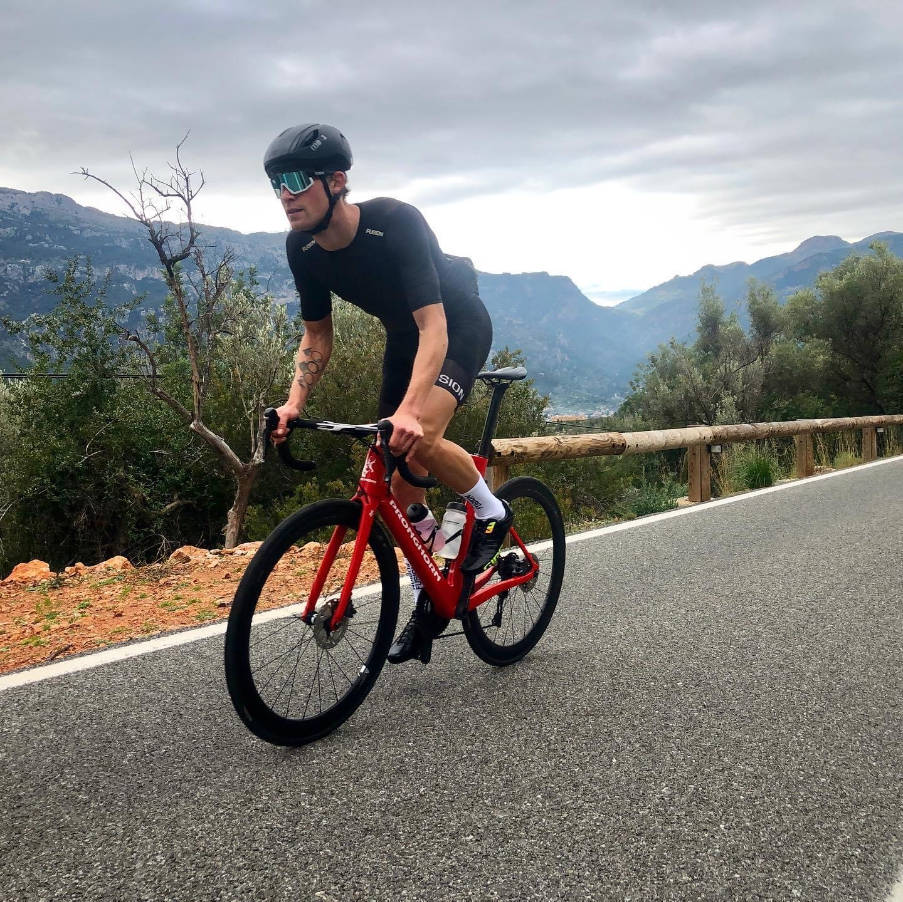Viktor Thorup’s 4 Habits to boost your cycling training
Revere Greist
Here's a perspective on cycling from Zihi's Ambassador, Viktor Thorup. Viktor is an Olympic speedskater who recently competed at the Beijing winter games. Cycling is a mainstay of his training. Let's see what he has to say!

Hello everyone!
As a professional speed skater, I only compete 4-5 months of the year, whereas I spend the remaining months mainly on my bike, building a fitness foundation that can carry me through an intense winter. From March to October, I spend a weekly average of 16h in the saddle, in addition to my skating and weight training. This takes a lot of motivation and willpower, but the last 10 years of professional sports has taught me a handful of things about cycling training, that I’m about to share with you guys.
Create a nutrition and hydration pattern… And stick to it!
The high energy expenditure linked to cycling workouts also demands a high energy intake for us to get the most out of our training. Few sports consist of such long periods of uninterrupted efforts as cycling, and it’s a must to actively refuel during long workouts or races.
An easy way to do so is simply by making an “intake pattern”. Let’s say bar/gel every 40 min and water/isotonic sip every 20 min. This doesn't just remind you to stay energized and hydrated, it also helps you plan and pick an adequate amount of food to bring for your rides, as you are conscious of this in your workout preparation.
As a little bonus benefit, you might also find that this works as a nice mental trick to subconsciously divide long workouts into smaller and more doable portions, as you start thinking in e.g. 20 min till next water sip.
Personally, a structured energy intake has led me to quicker glycogen storage after workouts, leading to a much better recovery on days with two workouts.

Half of my Olympic training is done on the bike
Higher pressure isn’t always better!
Despite the commun understanding that higher tire pressure equals faster cycling (up until a certain point, or puncture), this is not always true. Even if you ask the pro’s, you’ll rarely find recommendations above 7 bars. On the other hand, a slightly lower tire pressure comes with a handful of benefits.
Comfort. Low air pressure also means better impact absorption, something your back, neck, feet, and wrists will thank you for! As a skater, constantly being in a compact position with no handlebars to allow my arms to take off some of the strain from the back, I truly appreciate the “softer ride” on the bike.
Grip. A less inflated tire will have a wider contact surface with the ground, providing a better grip. This is super handy in tight turns or when riding in the wet, which is why you’d also see the pro peloton lowering the air pressure even further, when riding in the rain.
Fewer punctures. Having to stop for a tube change is never fun, so why not take out a bar or two before you head out for your next ride.
Find a purpose for each ride
No matter how much you love cycling, there can be times where motivation isn’t at its peak. My big motivational challenge has always been to find purpose and meaning in long monotonous rides in the early spring, from which I will only really feel the benefits in the succeeding winter. When the training plan says long aerobic ride and the rain just started pouring down, it’s easy to start questioning oneself if it’s actually worth it. My number one mental trick is to find a purpose within the ride itself, in one way or the other. Ideally you would team up with a buddy or even a group of cyclists so that you’re joining an actual appointment, forcing you to get going. However, the purpose can be much less than this. Maybe you just find a coffee shop roughly 30km away from home that you’re gonna stop by on your ride, forcing you to get through with that 2h ride in your training calendar. If you are completely out of coffee shops or ice cream booths, how about planning to take a photo at some picturesque location mid ride? It takes surprisingly little to convince the mind to find purpose, even when it’s not the most evident.
To give you some examples, my last three rides passed by mum’s for lunch, a public school to give a motivational talk and testing out the entire 2nd stage of The coming Tour de France, starting in my hometown.

Cycling outdoors is never boring
Do your homework
Stretching, core and back workouts, ROM and strength sessions… Bored just reading about it, right? Well, injuries are much more boring, so those “extra” things might actually be worth it. This is something we athletes generally appreciate the older they get or once the injury has already occured… Don’t wait for it!
When my skating season starts I often spend an entire hour warming up the joints with some active stretching and mobility exercises, so I’m sure you can handle a few post ride stretches. Once it becomes a habit, you barely think about it ;)
It takes very little effort to improve on your flexibility and as little as 1-2 weekly sessions of 10min stretching can really do wonders. The best part is that you are likely to find that on top of the injury preventing part, you can adapt for faster and more aerodynamic positions on your bike as your flexibility improves. Cycling is based on a somewhat statical position and we do not naturally expand our range of motion (ROM) or engage our abdomen/back. This can easily lead to some severe injuries as we can end up getting fitter and stronger in the lower body parts, whilst the upper body lacks behind. This is a highway to overcompensation or overload injuries. That’s why my final tip is to take out 30-60minutes of your week to really focus on flexibility, core, back and ROM.
About the author
Revere Greist
Revere Greist is the COO and Co-Founder of Zihi, AI-based endurance sports training platform. With more than 20 years in endurance sports and Kona AG 8th place he is fond of sport science and the most effective ways to be fit for a race.
MBA, COO
Madison, WI